...
Sequencer component is used to retain the sequence of messages when a certain section of the flow has to be processed in multiple flows for performance concerns. When messages are split into parallel flows, the messages are not guaranteed to reach the end of the flow in the order of their arrival. A pair of sequencer components launched in Generate and Resequence modes respectively ensures the order is maintained.
Configuration
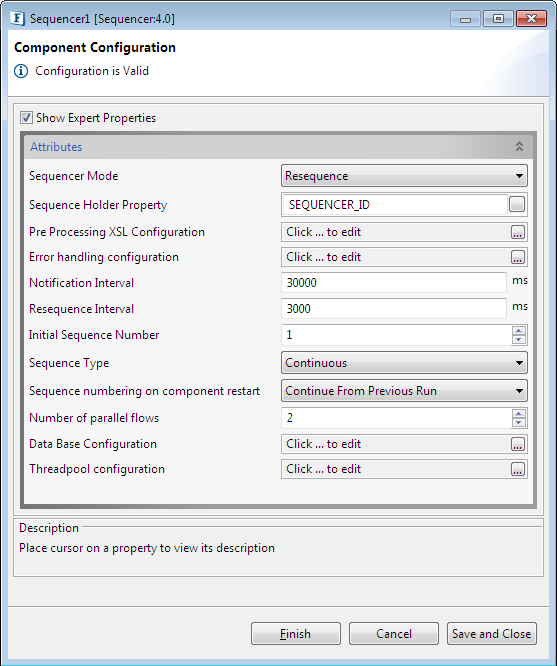
Figure 1: Component Configuration properties
Sequencer Mode
It has two options—Generate and Resequence. The first option is used to generate a sequence starting from the given Initial Sequence Number. Resequence sorts all the messages as it is stored in the sorted map. Hence, they appear in the order of their arrival. This is most useful in a Multithreaded environment.
...
Number from which sequence starts. By default, it is set to 1.
Sequence Type
The two sequence types for Resequence Sequencer Mode are:
- Continuous: Select this to have two consecutive sequence numbers differ by 1.
- Non-Continuous: Sequence numbers are not generated continuously.
...
| Tip | ||
|---|---|---|
| ||
For the solution to work even when components are restarted, the following changes have to be made.
|
Data base Configuration
Click the ellipsis button to configure the required database.
| Tip |
|---|
Refer the Database Configuration section in the DB page for descriptions of database configuration properties. |
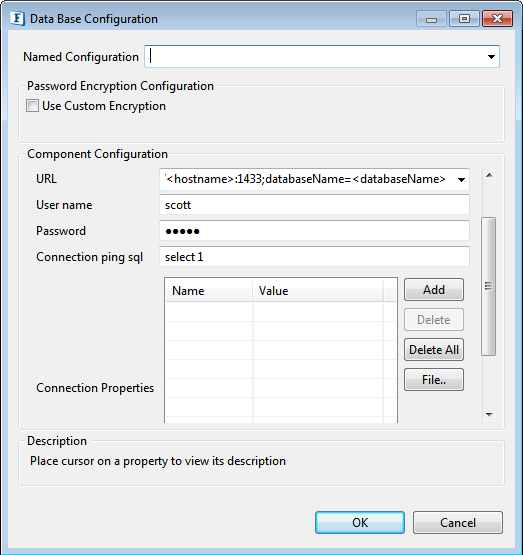
Figure 2: Database Configuration
Threadpool Configuration
This property is used when there is a need to process messages in parallel within the component, still maintaining the sequence from the external perspective.
| Note |
|---|
Click the Threadpool Configuration ellipsis button to configure the Threadpool Configuration properties.
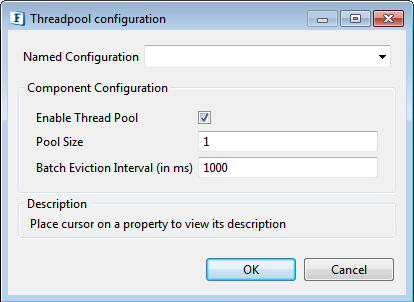
Figure 3: Threadpool Configuration
Enable Thread Pool
Enable this option to configure the properties that appear as below.
Pool Size
Number of requests to be processed in parallel within the component. Default value is '1'.
Batch Eviction Interval (in ms)
Time in milliseconds after which the threads are evicted in case of inactivity. New threads are created in place of evicted threads when new requests are received. Default value is '1000'.
Functional Demonstration
Scenario 1
...
Filters are appropriately set on routes so that each parallel flow receives the corresponding message.
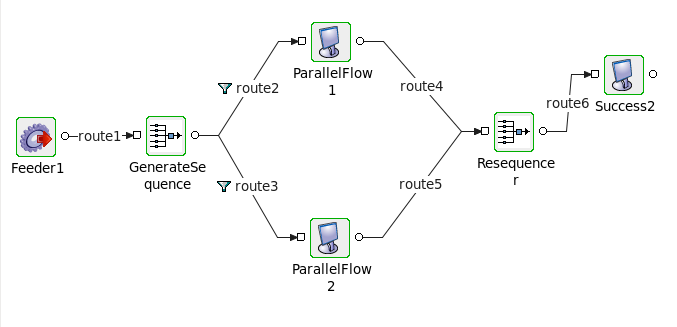
Figure 4: Sample flow
Sample Output
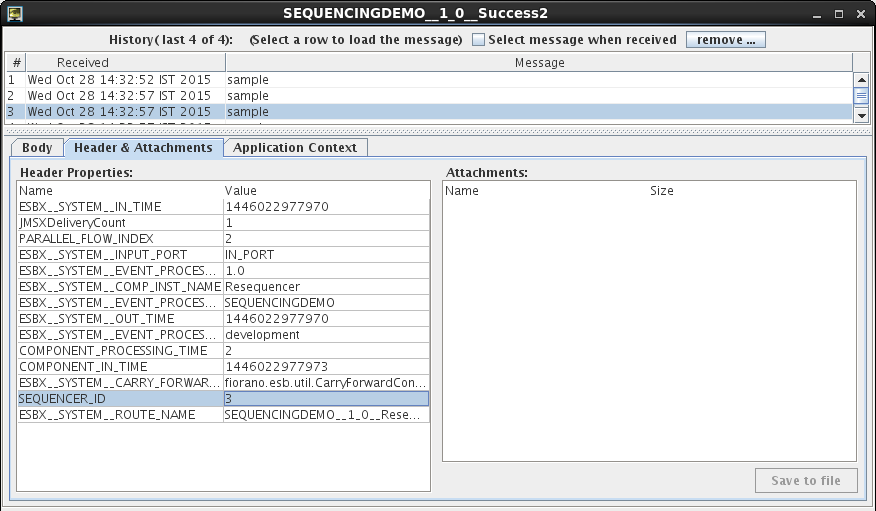
Figure 5: Output in the Display window
Useful Tips
- Notification Interval, Resequence Interval, and Sequence Type properties appear only on selection of 'Resequence' option as Sequencer Mode.
...